Quick info:
| Activation Date: 04-05 January 2020 | |
| Transport: Hike | Distance: 9.2 miles |
| Elev. Gain: 2,250 feet | Time: 3.5 hours |
| Rig(s): FT-891 | Bands: 160–20m, CW+SSB |
| Antenna(s): Random Wire | Antenna Support: Some oaks |
| RF Noise: Low | Cell Service: Marginal (T-Mobile) |
I’m always trying to combine radio fun with my various outdoor activities—including backpacking and camping. But for quite a while, I’ve wanted to do a camping/backpacking trip with the primary purpose being radio fun—on a summit! With the SOTA “Flavours” Challenge 2020 going on, I also needed to get some contacts made on 160 and/or 80 meters—bands that work best at night. So, without much planning, I decided to do a quick overnight trip! Henry Coe State Park has lots of backcountry campsites, and also allows dispersed backpack camping in all but the western section of the park.
Getting There
| Parking: Hunting Hollow Entrance, Henry Coe State Park |
| Trailhead: Hunting Hollow |
| Fees/Permits: $6 vehicle fee, plus $5 per camper for overnight |
| Route: Lots of options. I took Lyman Willson Ridge up, Jim Donnelly Trail down. |
| Dogs: No | Toilet: Yes (at trailhead) |
Since I needed to make this a fairly quick trip due to other weekend obligations, I packed pretty quickly. After getting chores and packing done, I was hoping to arrive at the summit with at least some daylight left to set up camp. I left only 15 minutes later than my planned time—I was proud of myself! It’s a fairly straightforward drive onto Gilroy Hot Springs Road, turning right into the trailhead lot of the Hunting Hollow entrance.
I’ve been to this trailhead many times, doing the various summits Henry Coe State Park has to offer. Usually I’m trail running, though. This trip would be much different than my usual.
I arrived with my payment ready (and my own pen, in case there wasn’t one). I dropped my payment in the box and didn’t waste any time hitting the trail.
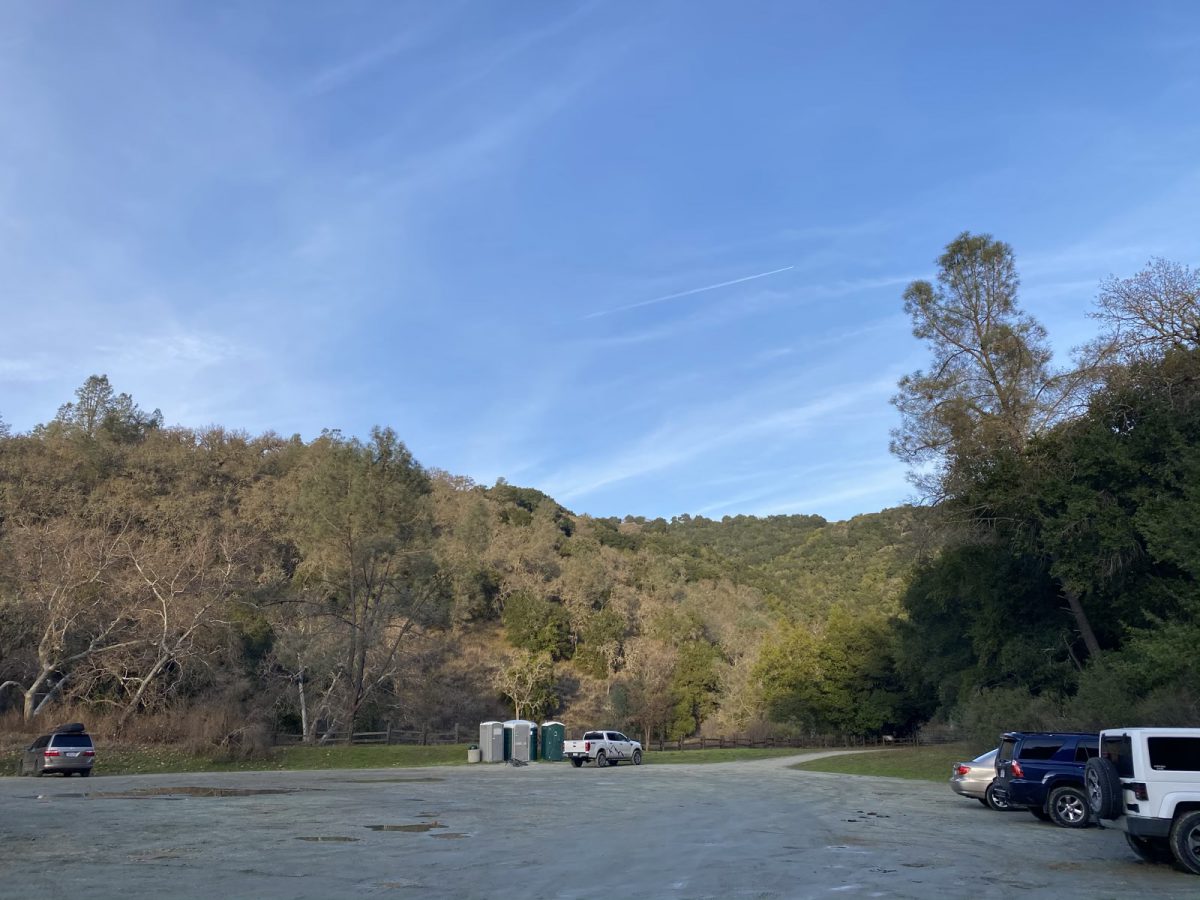
The Hike
Knowing the route well (or so I thought), I got a fast start. I hiked up Hunting Hollow Road, headed for Middle Steer Ridge Trail.
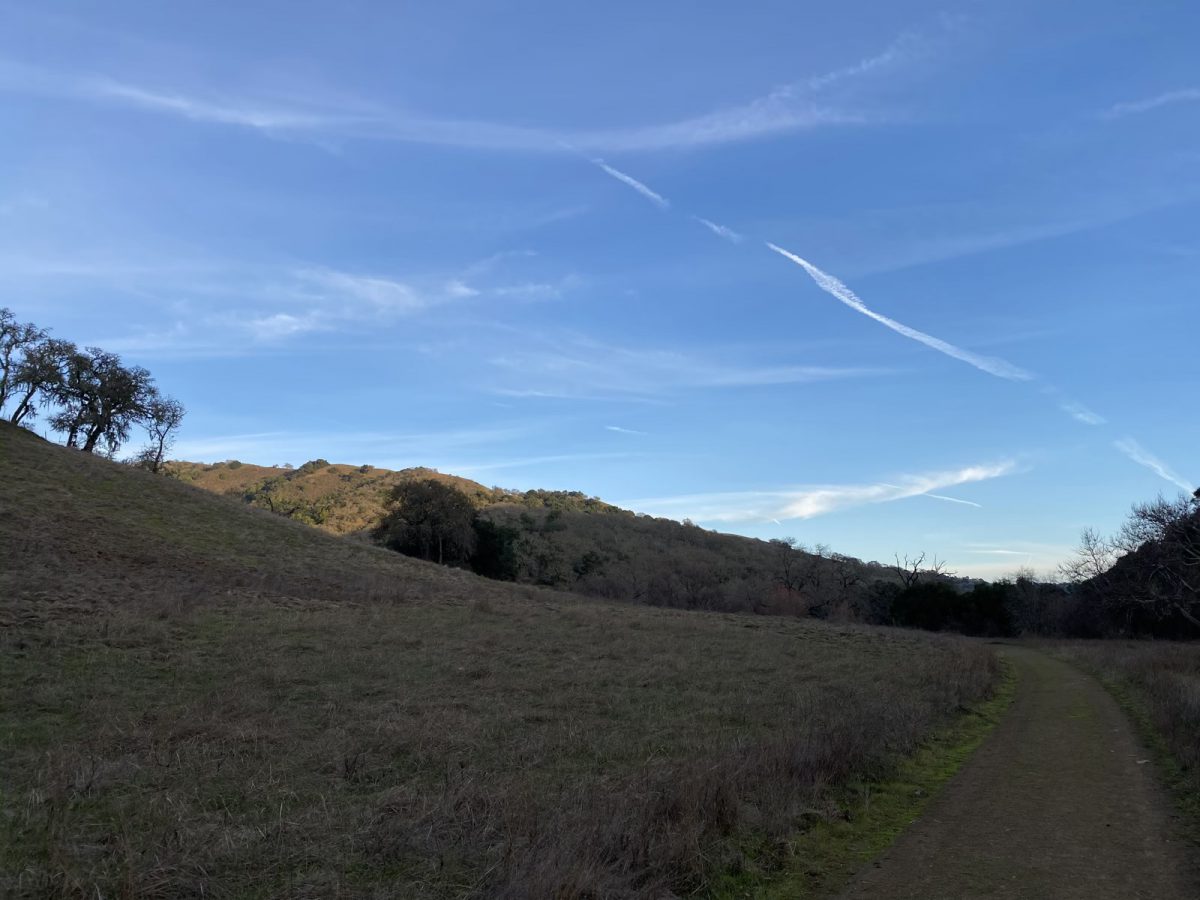
Making my left turn off of Hunting Hollow Road, I made a mistake. The trail forks immediately after making the turn. Instead of taking the left trail like I should have, I took the right. This put me on Lyman Willson Ridge Trail, which is great if your destination is Willson Camp. About half way up the climb, I realized I was on the wrong trail. I could see the ridge I was supposed to be on, but it was too late to change course. I accepted I was adding a little over a mile to my journey and carried on. I’d be arriving at the summit in full darkness.
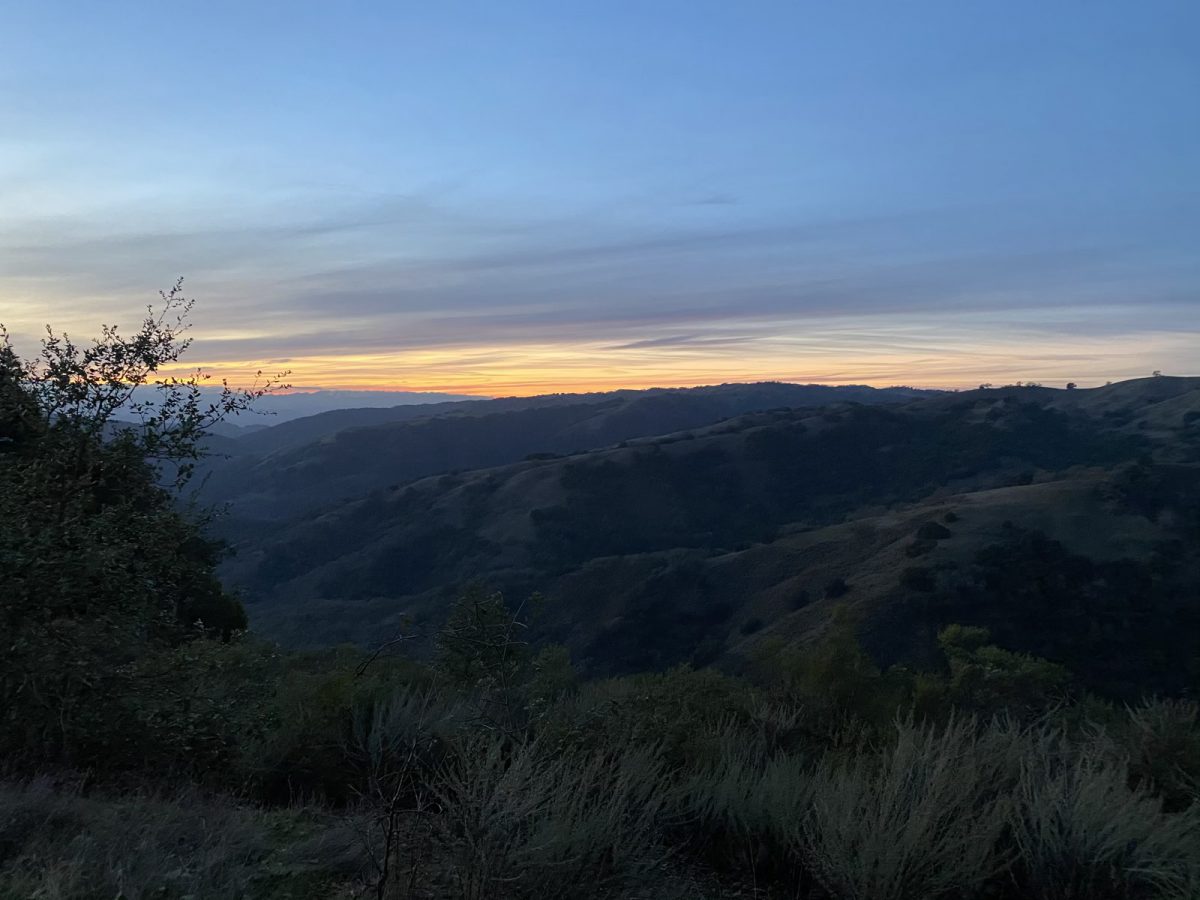
I tried to keep a pretty good pace going up. But since my pack was heavy (around 53 pounds!), I wasn’t going super-fast. I arrived on Steer Ridge (the ridge with the summit on it) around 30-40 minutes after sunset. I had a snack, enjoyed the quiet, and carried on up the ridge toward the summit. This part of the hike was easy.

Within 30 minutes of arriving on the ridge, I was at Willson Peak. There was almost no wind, and pretty decent moonlight from the half moon. I cranked up the intensity on my light and got to work scoping out the area.
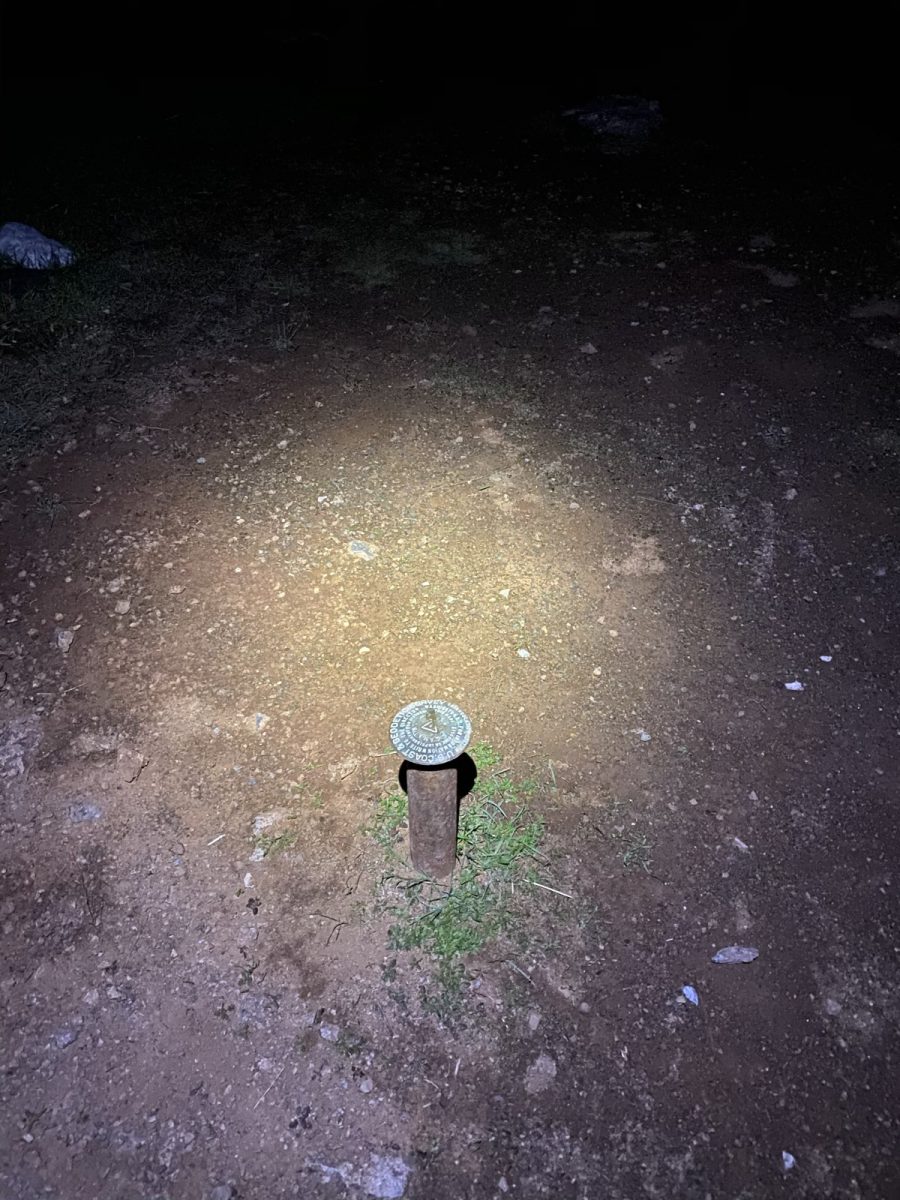
Setup and Operation
Since this trip involved camping, I’d be doing quite a bit more setup than my usual SOTA excursion. I decided to get my tent partially set up first, then get the antenna set up, then finish setting up the tent and cook some supper (ramen) while getting started on the radio.
I got my tent up, got excited for supper, and realized I’d left my stove behind! Even though I checked my packing list before leaving, I made the assumption my stove was in the pack since I didn’t see it. I’d discover later that it was hiding under a jacket I didn’t bring on this trip. After swallowing my second defeat of the evening, and also deciding everything would be OK since I had a snack or two (and lots of water), I continued my setup process.
For the antenna, I used a “random” wire antenna I’d put together just for this purpose—operating on lower bands. With a radiating wire length of around 136 feet and counterpoise of around 28 feet, it’s capable of being tuned to all bands 160 through 10 meters. I set up the taller of my fiberglass masts (around 21 feet) near my tent. I ran the wire through the loop at the top of that, then walked it across the summit to a distant oak tree. Using some rope, I hoisted that end of the wire up to a branch about 20 feet up. This wasn’t as high as I’d hoped to get the antenna, but it was the best I could quickly and safely do in the dark.
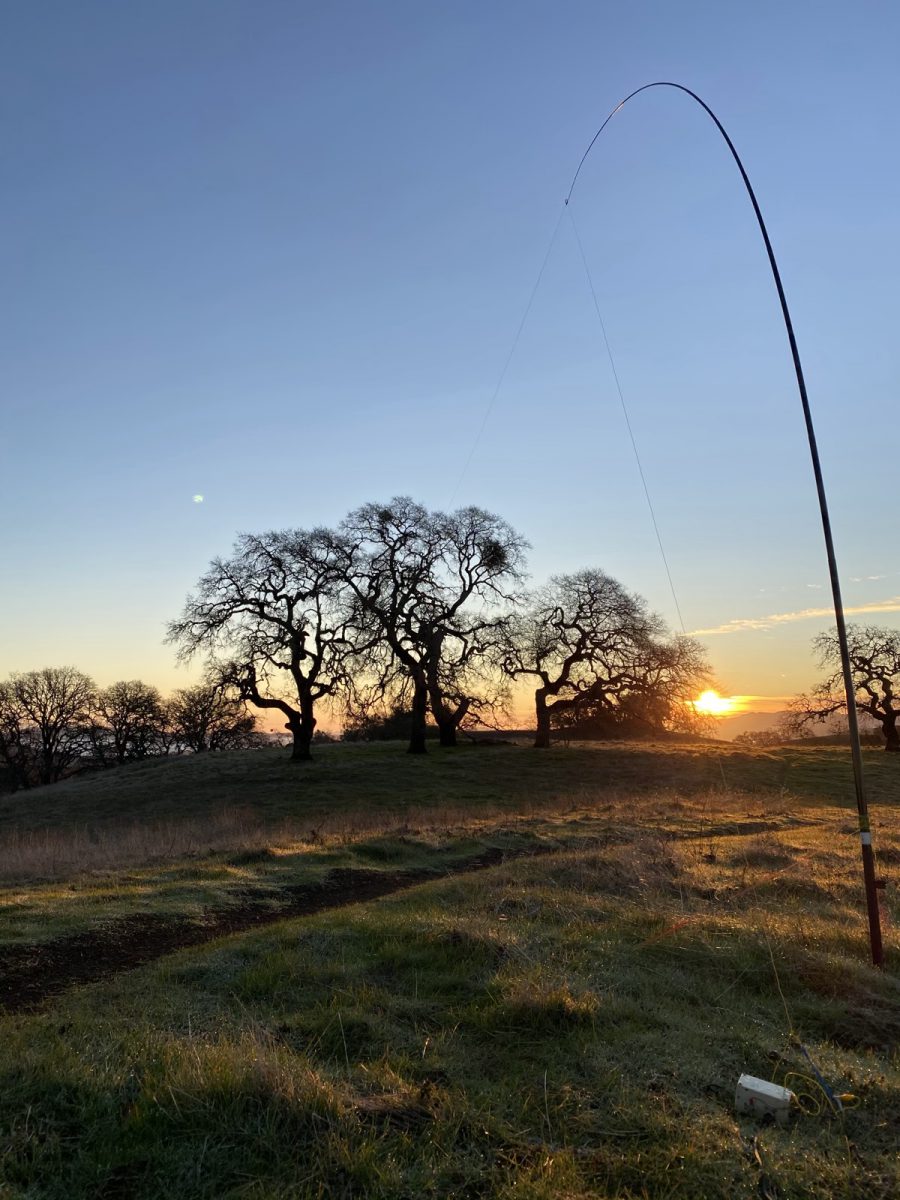
With everything all set up, I ran the coax into my tent, made myself comfortable, and started operating.
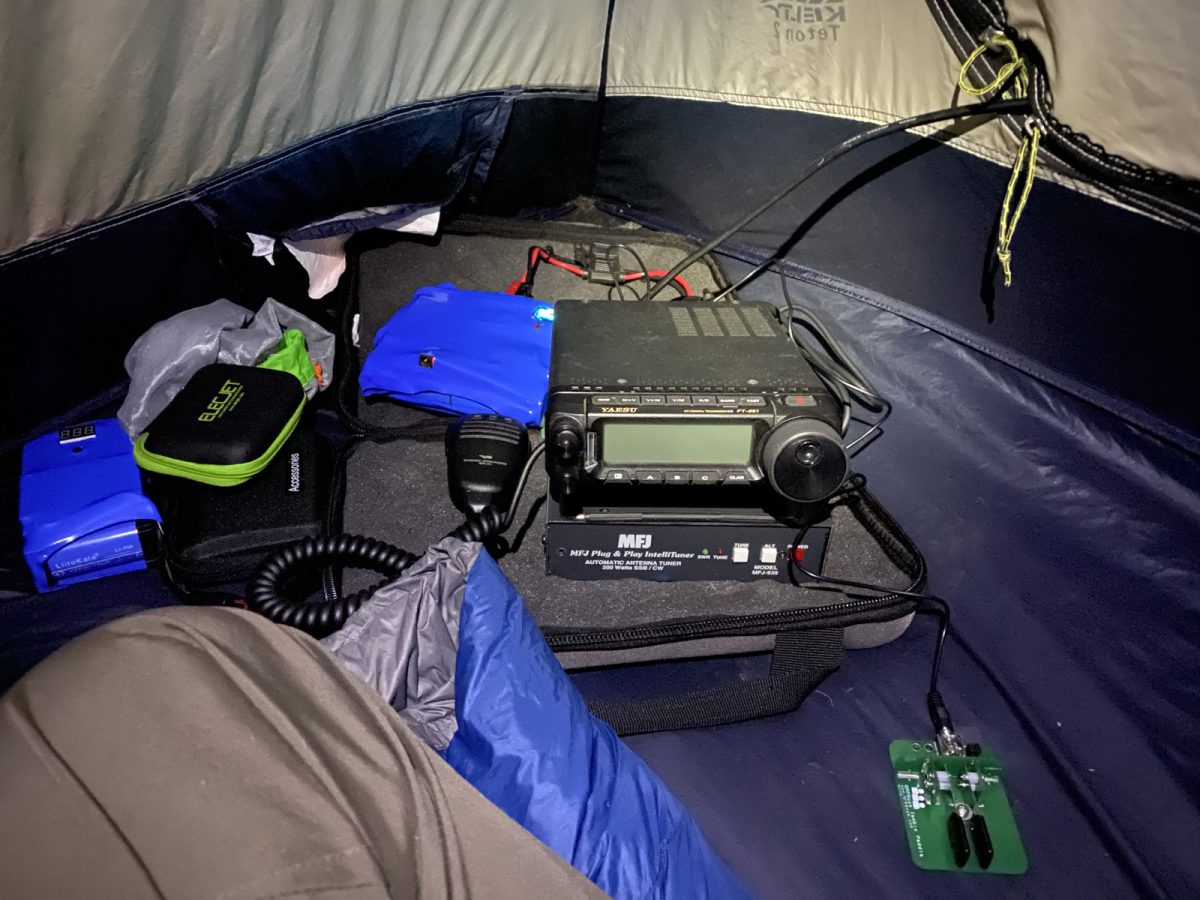
160 meters – night operation
Due to the size of antenna required, and other challenges, I’ve never made contacts on the 160-meter band. With my evening operation on the summit and my long random-wire antenna, I was able to change this. I made 3 contacts using CW, with about 5-10 minutes of operation at 20 watts. One contact was up in Oregon, over 570 miles away! I also tried SSB briefly, with no luck. Even tried throwing my call into the end of a ragchew or two, but either they couldn’t hear me or they were ignoring me—even when I turned the power up to 100 watts.
80 meters – night operation
Here, where my antenna was more appropriately-sized, I had considerably more success. In fact, the antenna may be too appropriately-sized—the tuner had a bit of trouble matching it, most likely because it’s too close to a half-wavelength. Nonetheless, it was reasonably matched, and I think there are more people with 80-meter capability as well. I made 9 contacts on CW, 7 contacts on SSB. The farthest on CW was NU7A in Leavenworth, WA—over 710 miles away! On SSB, the farthest was NN7M in Seattle, WA—over 700 miles away!
160 meters again
I figured I’d give 160 meters one more try, since NN7M told me he would have liked to have gotten me on 160 meters. And so it was—we were able to make the contact!
Bedtime
With all of that 160m and 80m success in the log, I was ready to hit the sack. I went outside to enjoy the cool air and great views on a pleasantly windless night.
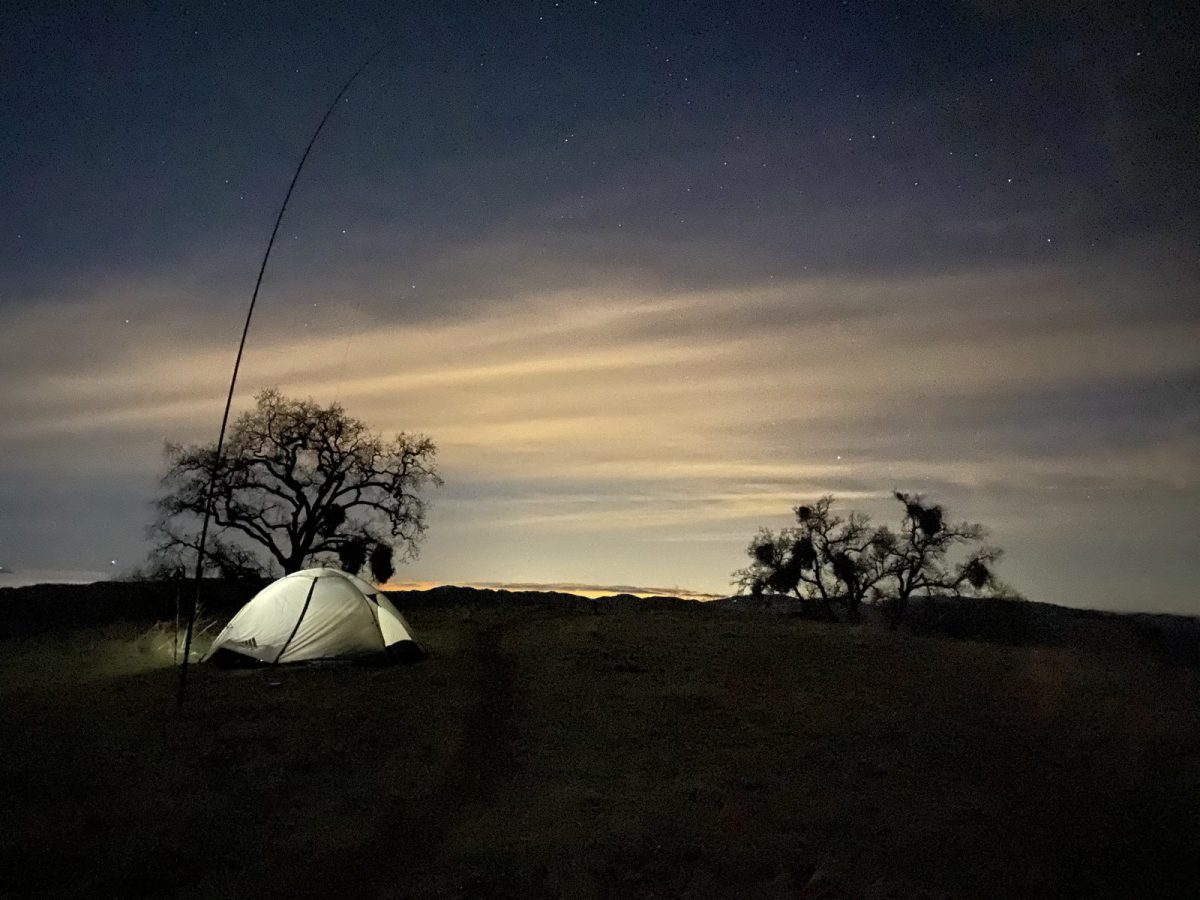
Morning
In the morning, I proceeded to work a few more stations on 80 meters, then a bunch more on 40, 20 and 30 meters (like my usual activations), including one summit-to-summit with Paula K9IR. I would have loved to stay and operate more, but needed to pack up and get home for a day of household duties.
While tearing down camp, I took some time to enjoy the amazing views.
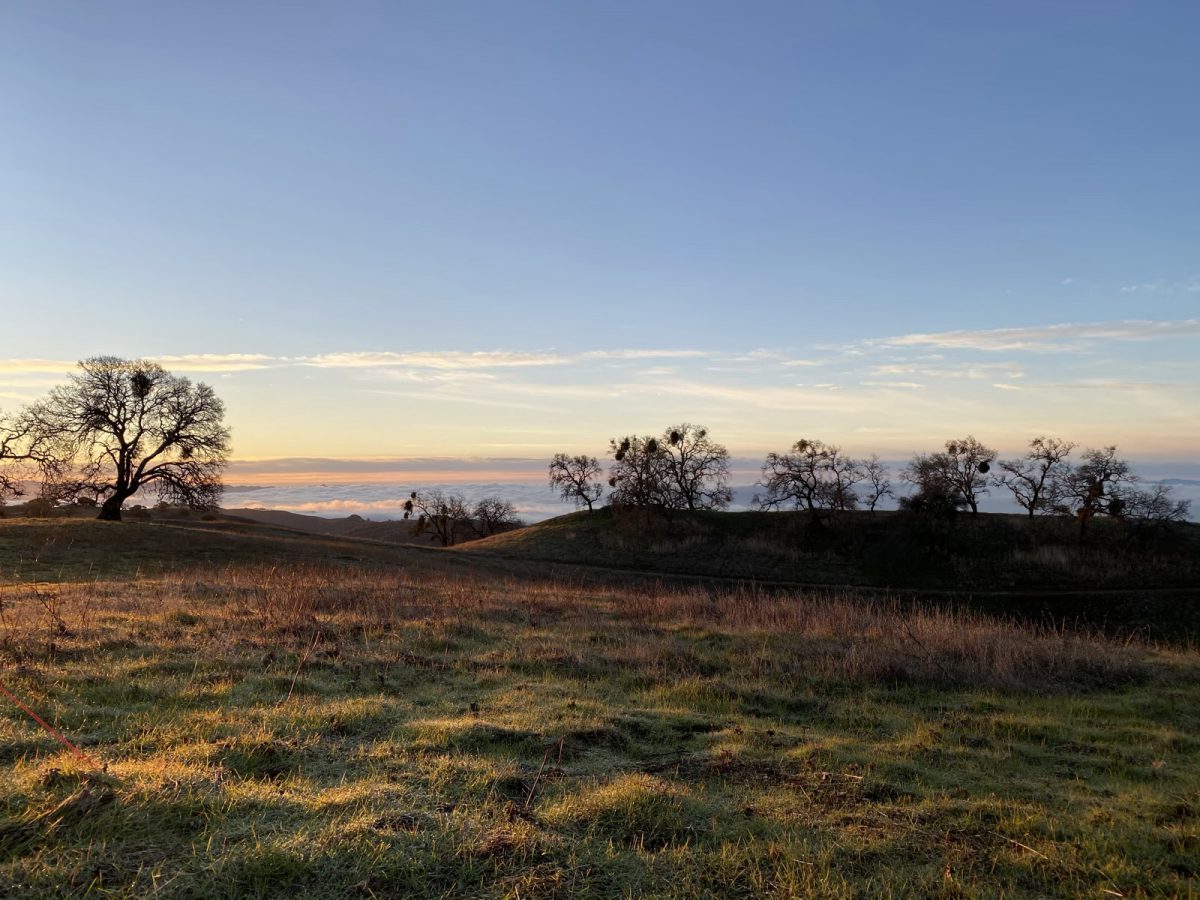
One thing I’d like to note with regards to my chosen camp site: I wouldn’t normally camp right next to the trail and right on the summit where everyone would normally visit. It’s just not good manners. But since I knew I’d be occupying the space outside of the usual hours anyone would visit, I took the liberty of camping right there on the summit. It was great!
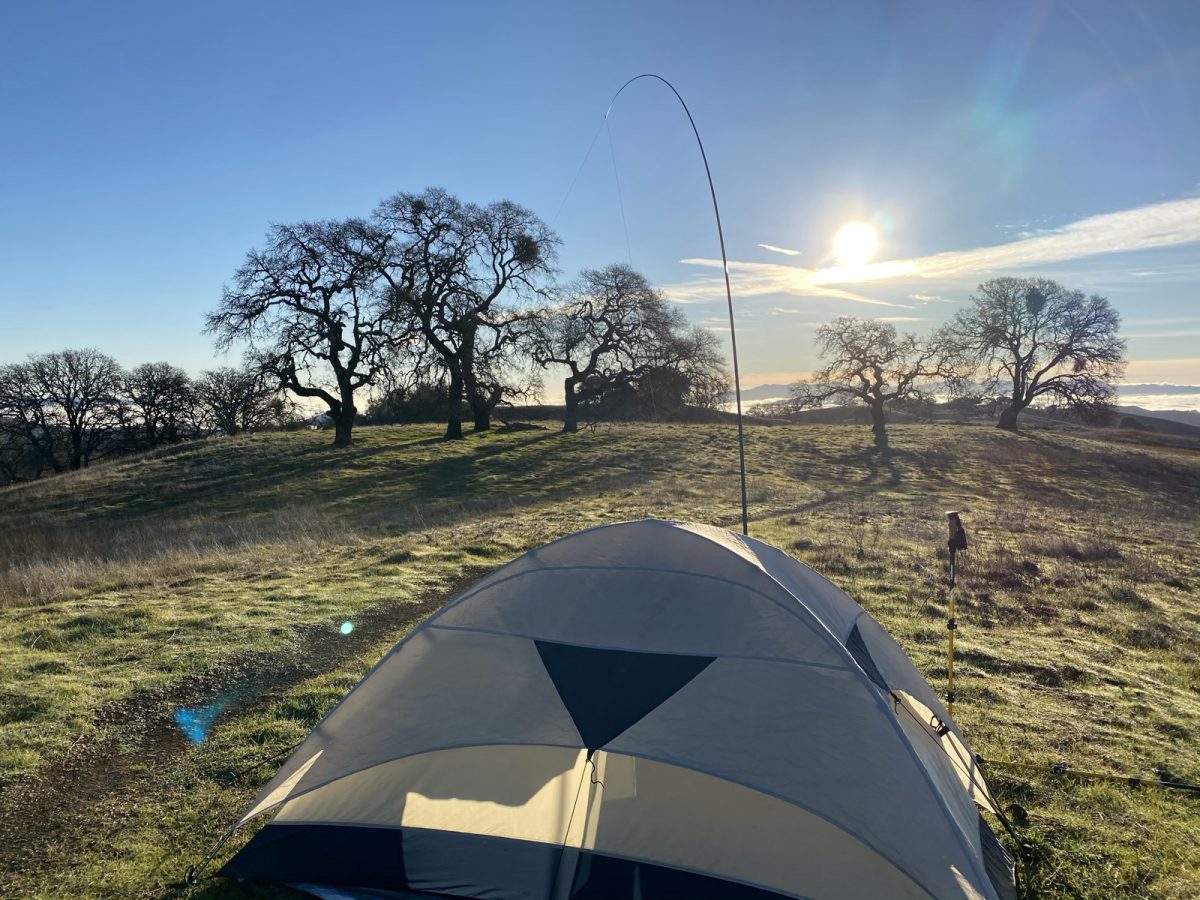
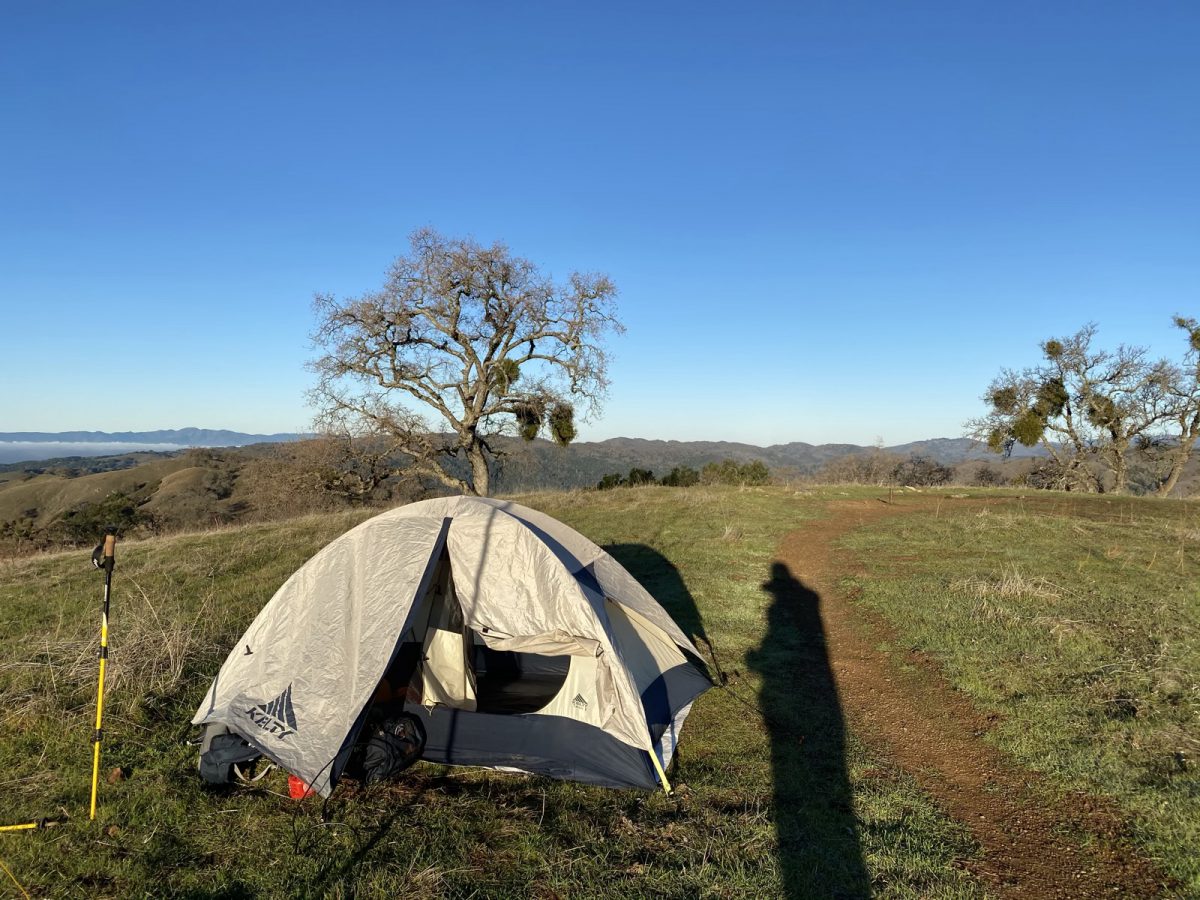
With everything packed up, I headed down. All in all, a great trip! Next time, I’ll remember to bring my stove.
Thanks to all the chasers and everyone else involved with SOTA!
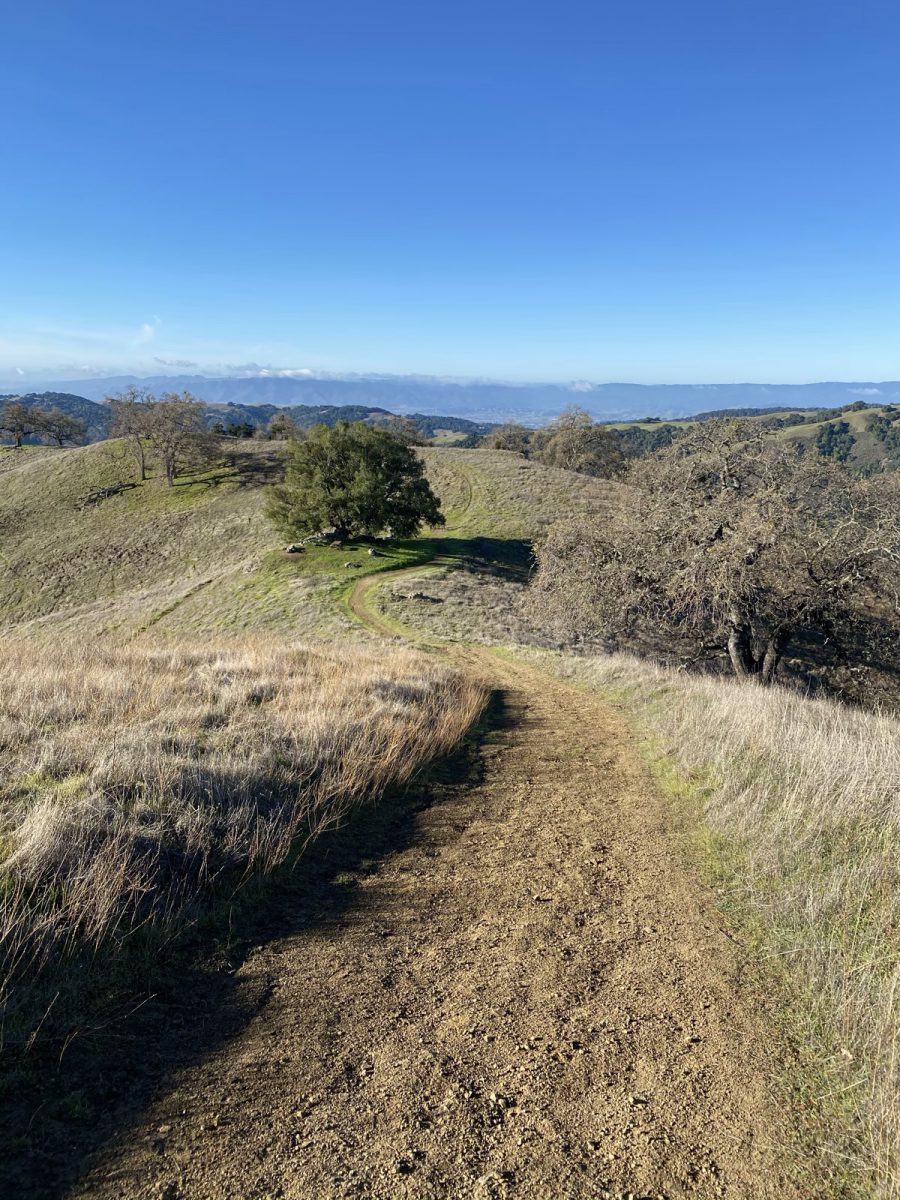
Activation Log
| Time | Call | Band | Mode | Notes |
|---|---|---|---|---|
| 04:25z | WC6J | 1.8MHz | CW | |
| 04:26z | N0OI | 1.8MHz | CW | |
| 04:30z | AF7MD | 1.8MHz | CW | |
| 04:55z | K6KM | 3.5MHz | CW | |
| 04:56z | KB9ENS | 3.5MHz | CW | |
| 04:57z | K6HPX | 3.5MHz | CW | |
| 04:58z | WB7ULD | 3.5MHz | CW | |
| 05:00z | NN7M | 3.5MHz | CW | |
| 05:01z | KX6A | 3.5MHz | CW | |
| 05:02z | K6ARK | 3.5MHz | CW | |
| 05:06z | WC6J | 3.5MHz | CW | |
| 05:09z | NU7A | 3.5MHz | CW | |
| 05:15z | WC6J | 3.5MHz | SSB | |
| 05:18z | N0OI | 3.5MHz | SSB | |
| 05:21z | W6NYU | 3.5MHz | SSB | |
| 05:23z | NN7M | 3.5MHz | SSB | |
| 05:24z | AF7MD | 3.5MHz | SSB | |
| 05:28z | K6HZR | 3.5MHz | SSB | |
| 05:36z | NN7M | 1.8MHz | SSB | |
| 05:40z | NN7M | 1.8MHz | CW | |
| 14:44z | K6ARK | 3.5MHz | SSB | |
| 14:45z | K6YK | 3.5MHz | SSB | |
| 14:47z | AA6XA | 3.5MHz | SSB | |
| 14:54z | W0MNA | 7MHz | SSB | |
| 14:57z | W0ERI | 7MHz | SSB | |
| 15:06z | K0LAF | 7MHz | CW | |
| 15:06z | KR7RK | 7MHz | CW | |
| 15:07z | W5ODS | 7MHz | CW | |
| 15:08z | AA6XA | 7MHz | CW | |
| 15:09z | N6PKT | 7MHz | CW | |
| 15:10z | K8TE | 7MHz | CW | |
| 15:13z | WD4CFN | 7MHz | CW | |
| 15:18z | K3TCU | 14MHz | CW | |
| 15:19z | K4MF | 14MHz | CW | |
| 15:20z | K9OZ | 14MHz | CW | |
| 15:21z | N4EX | 14MHz | CW | |
| 15:23z | WI8J | 14MHz | CW | |
| 15:24z | KC3MX | 14MHz | CW | |
| 15:36z | K9IR | 14MHz | CW | S2S |
| 15:43z | W7USA | 10MHz | CW | |
| 15:44z | WA7JTM | 10MHz | CW | |
| 15:44z | NW7E | 10MHz | CW | |
| 15:45z | N0EVH | 10MHz | CW | |
| 15:46z | NJ7V | 10MHz | CW | |
| 15:48z | VE2JCW | 10MHz | CW |
No comments:
Post a Comment